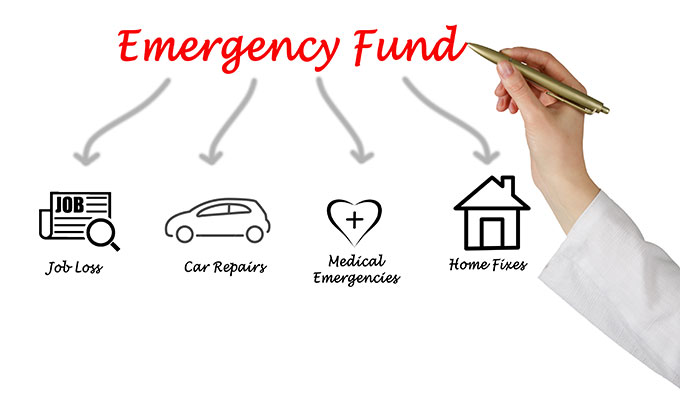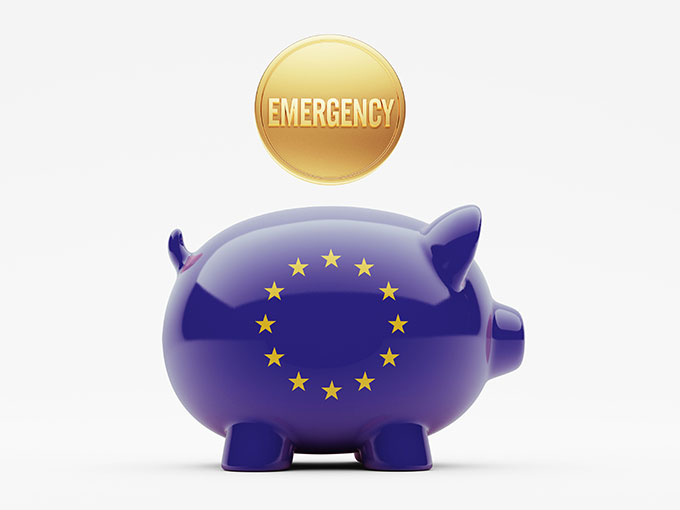
Managing household cash flow responds to wide-ranging financial demands, from daily expenses to long-term debt repayment. At the heart of each successful effort is sound budgeting and commitment to fiscal responsibility.
Well-articulated budget categories help track income and outgoing payments, which ultimately creates consistency in the way money moves through your hands. Although planning is an essential feature of prosperity and long-term achievement, unanticipated events remain a part of everyday life.
In order to minimize the impact of such challenges, prudent money managers incorporate safety nets capable of absorbing cash flow anomalies as they arise. An emergency fund not only hedges against unforeseen distress, but can also be used as an investment, to grow savings and income. As you shape your household budget, use these tips to account for pop-up expenses.

Even the best laid plans go astray when life presents unexpected challenges. To hedge against lasting negative effects, it is essential to fortify your ability to respond. Financial success, for instance, includes planning and day-to-day money management, but it also accounts for life's unpredictability. To cover all the bases, you must work toward the best possible outcomes, but also prepare for worst case scenarios. Several common challenges underscore the need for an emergency fund.

Unemployment
One of the most dire circumstances families face is unexpected unemployment. Whether short-term or ongoing, loss of income quickly changes financial fortunes in any household. To soften the blow of this potentially devastating condition, advisors recommend establishing an emergency fund capable of paying a minimum of 3-6 months' worth of household expenses. Calculating how much you should set aside starts by establishing a spending baseline, accounting for all of your financial obligations for a particular time period. Monthly budgets are the standard, because many bills and recurring payments revolve on monthly payment schedules. During financial crisis, however, tracking weekly spending may be a better approach, enabling micro-management of scarce resources.
Short-Term Disability
Like being laid-off or losing your job, temporary disability strains household budgets. A well-funded contingency account provides for your family as you get back on your feet and return to gainful employment. Although special insurance policies and employer benefits also contribute to financial security for disabled staffers, your own emergency resources serve vital functions as you mend from injury or illness.
Home Repairs
Most family budgeting accounts for everyday home maintenance, but what about major repairs? Several home systems, including the roof, heating plant, air-conditioning, and structural foundation are costly to repair and replace. Without a reserve fund, these costs must be addressed in other ways, leaving homeowners vulnerable to financial distress.
Appliance Repairs
In addition to a home's attached features, household appliances are also subject to failure and mechanical breakdown. Emergency funds can be used to cover the cost of a new refrigerator, range, or water heater. And although homeowner's insurance policies are in-place to cover damage and distress caused by accidents and forces of nature, most coverage carries a deductible, which must be paid by the policy holder. Backup reserves help cover these costs, which typically range from several hundred dollars into the thousands, annually.
Medical Expenses
Unexpected medical costs rise quickly, as health care services continue to become more expensive. In addition to the insurance premiums and deductibles you are responsible for, some procedures and practices are excluded from coverage - leaving you to foot the bill. Your rainy-day fund not only helps offset the costs of living when medical issues arise, but it also covers outstanding bills, as needed. Even those with good coverage should expect some out of pocket costs tied to doctor visits and hospital stays.
Vehicle Repairs
The cost of staying on the road includes gas, insurance, and minor vehicle maintenance. Unfortunately, obligations can also grow to encompass charges for major repairs and even replacement. Mobility is essential; built-in to every aspect of American life, so sustained down time is not an option for most families. Alternative resources ease the predicament, allowing uninterrupted motoring for families with dollars earmarked for unpredictable automotive costs.
Contingency reserves are set aside to address unanticipated needs, so emergency money is usually called-for at a moment's notice and must be held in accessible places. A savings account, for instance, draws some interest and gives account holders ready-access to needed funding. For simplicity and convenience, a basic interest-bearing savings account has traditionally been a good place to hold some cash in reserve.
Funds designated to be used for unplanned spending represent significant sums, so it doesn't make fiscal sense to let that much money sit idle. To make the most of rainy-day funds, split your resources between multiple holdings. Cash to cover two months spending could be placed in savings, for example, while four more months' needs could be invested in conservative bond funds or a certificate of deposit (CD).
As an alternative, banks and credit-unions sometimes offer no-fee, interest-bearing checking accounts suitable for holding crisis cash. It is essential to maintain discipline managing backup accounts though, lest the money be used for the wrong reasons. If you are prone to tap spare savings for everyday needs, construct barriers between yourself and your money. Bank separately, for instance, holding your disaster dollars at an out of the way institution. Or entrust side accounts to a spouse with better self-control.

Despite the importance of financial reserves, recent surveys indicate one in four American families do not have money set aside for emergencies.
The long-held recommendation for an adequate emergency fund is to build reserves covering 3-6 months' worth of expenses. In light of sustained unemployment and other potential costs, some analysts now advise a more aggressive approach, recommending at least 9 months' worth of financial obligations be covered by contingency funding.
According to one poll, 29% of families do not have any money put away for catastrophe or other cash flow interruption. And among those polled, another 20% claimed their savings would not cover them for a full three months, if the bottom fell out. The polling suggests a five-year low in financial preparedness, so what can be done to reverse the trend?
1
Account for Family Size - Money problems are based on economics, so the larger your family, the more vulnerable you are to distress. Unemployment and other difficulties bear disproportionately on couples with two or more children, so accounting for everyone when setting aside resources leaves you most prepared to overcome temporary setbacks.
2
Use Realistic Numbers - There is a tendency to underestimate monthly obligations, so a proper emergency fund should reflect actual budget figures, researched over a period of time. When in doubt, err on the side of caution, accommodating every conceivable expense.
3
Set Incremental Goals - Building backup funding takes time. Rather than failing to achieve unrealistic benchmarks, challenge yourself for the long haul. Use monthly or quarterly goals to guide your pace, achieving small victories at every stage of saving. Reassessing periodically, once or twice annually, keeps you on track and reinforces your commitment.
When it comes to preparedness, any amount of money designated for extra expenses and cash flow irregularities is better than none at all. With commitment and discipline, forward thinking household money managers build emergency reserves, over time. By setting realistic goals and staying true to your saving schedule, you'll quickly amass a three, six, or even twelve-month cushion, to absorb difficulties without compromising your lifestyle.